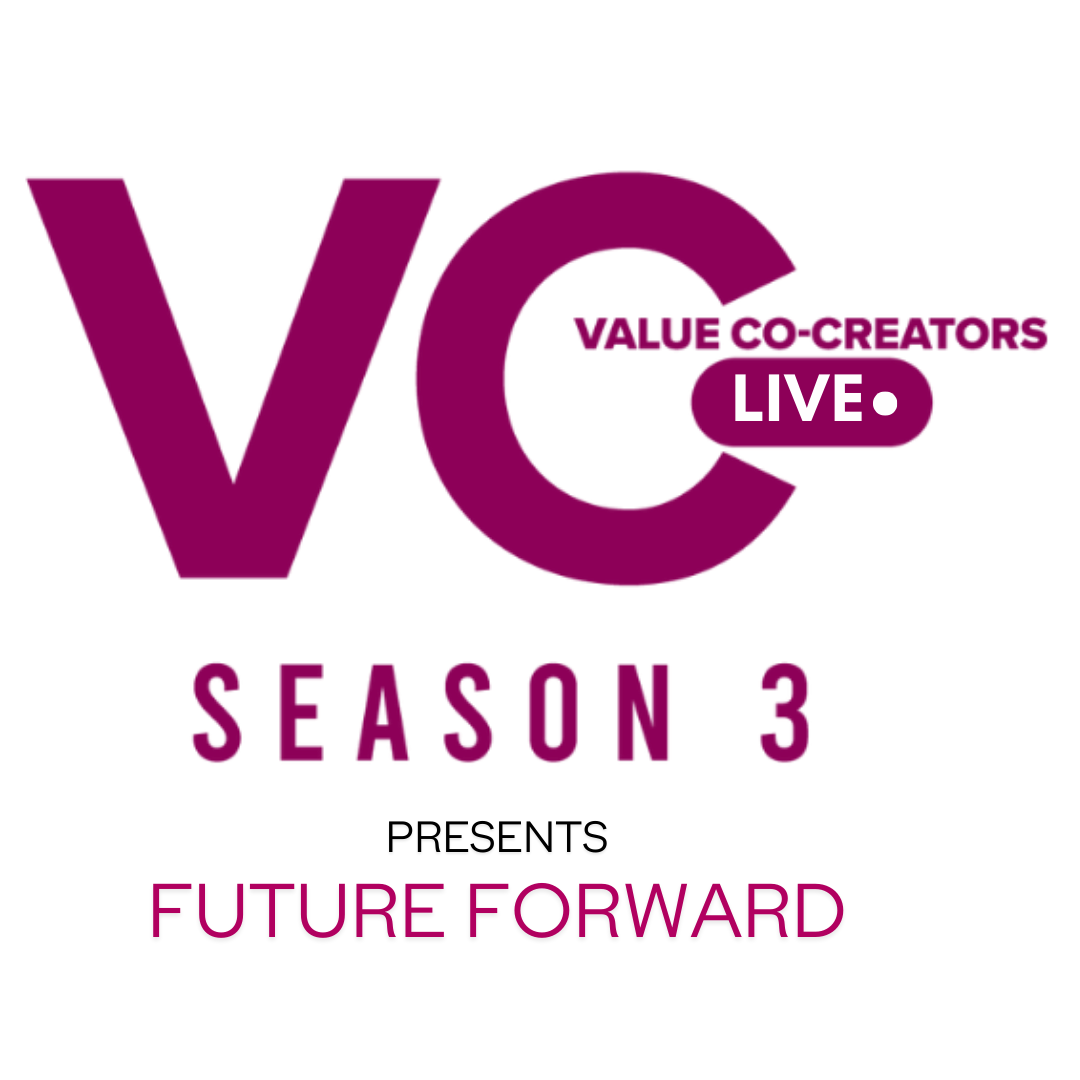Join us for insighful series of Webinars !

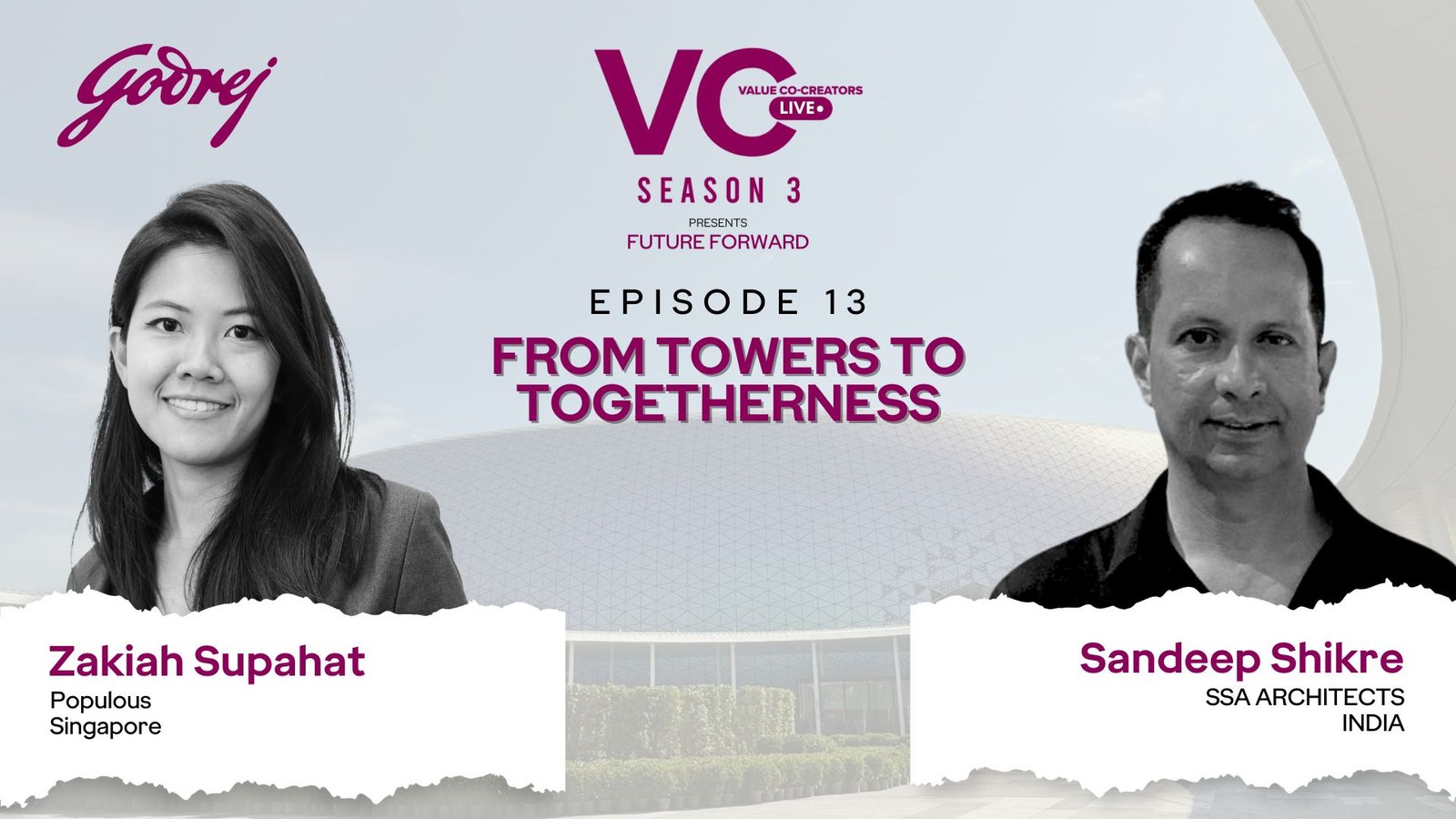
Episode 13
Zakiah Supahat and Sandeep Shikre

Episode 12
William Ti Jr. and Ratan J Batliboi

Episode 11
Leonard Ng and Ramprasad Akkisetti
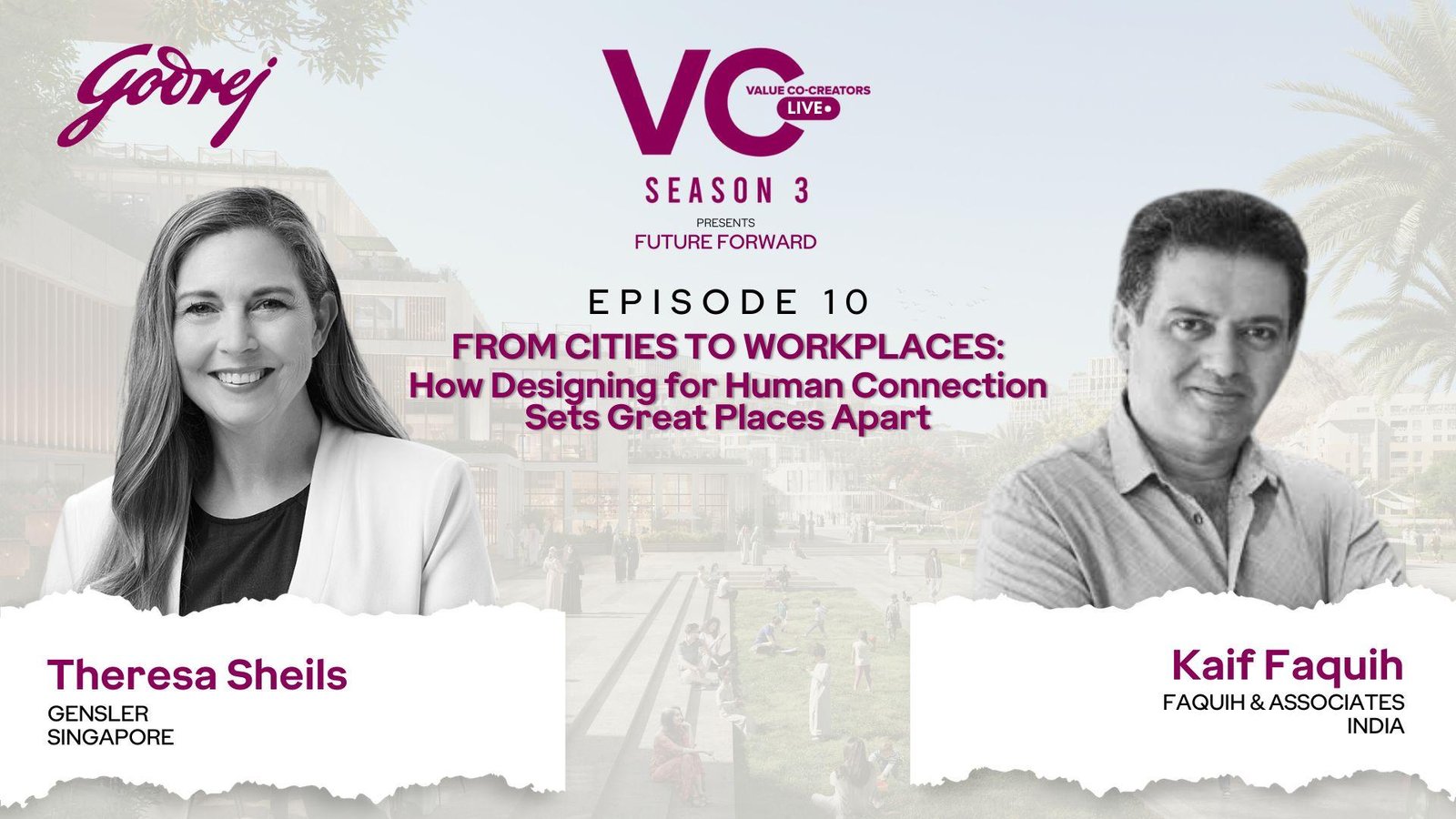
Episode 10
Theresa Sheils and Kaif Faquih
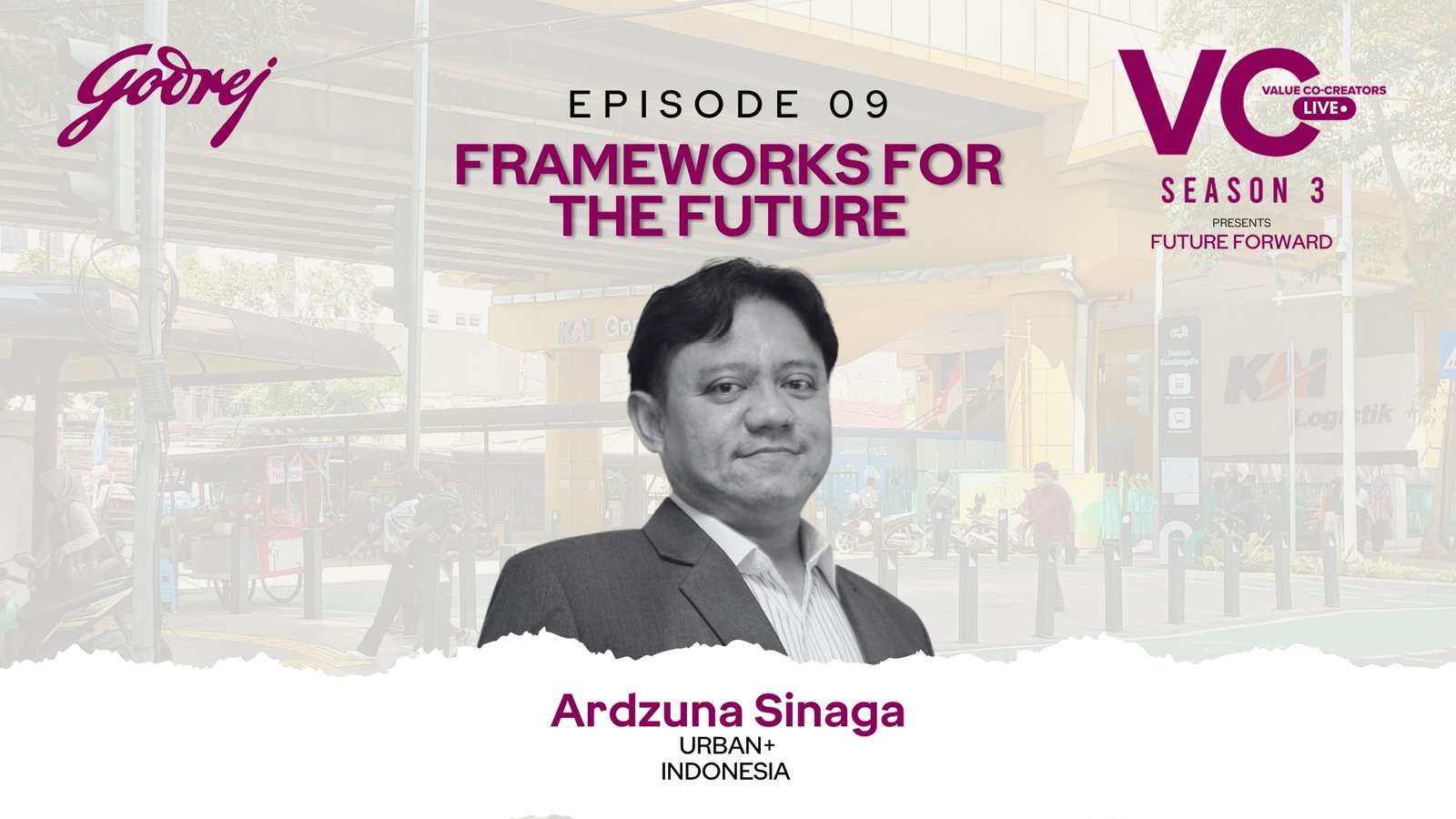
Episode 09
Ardzuna Sinaga
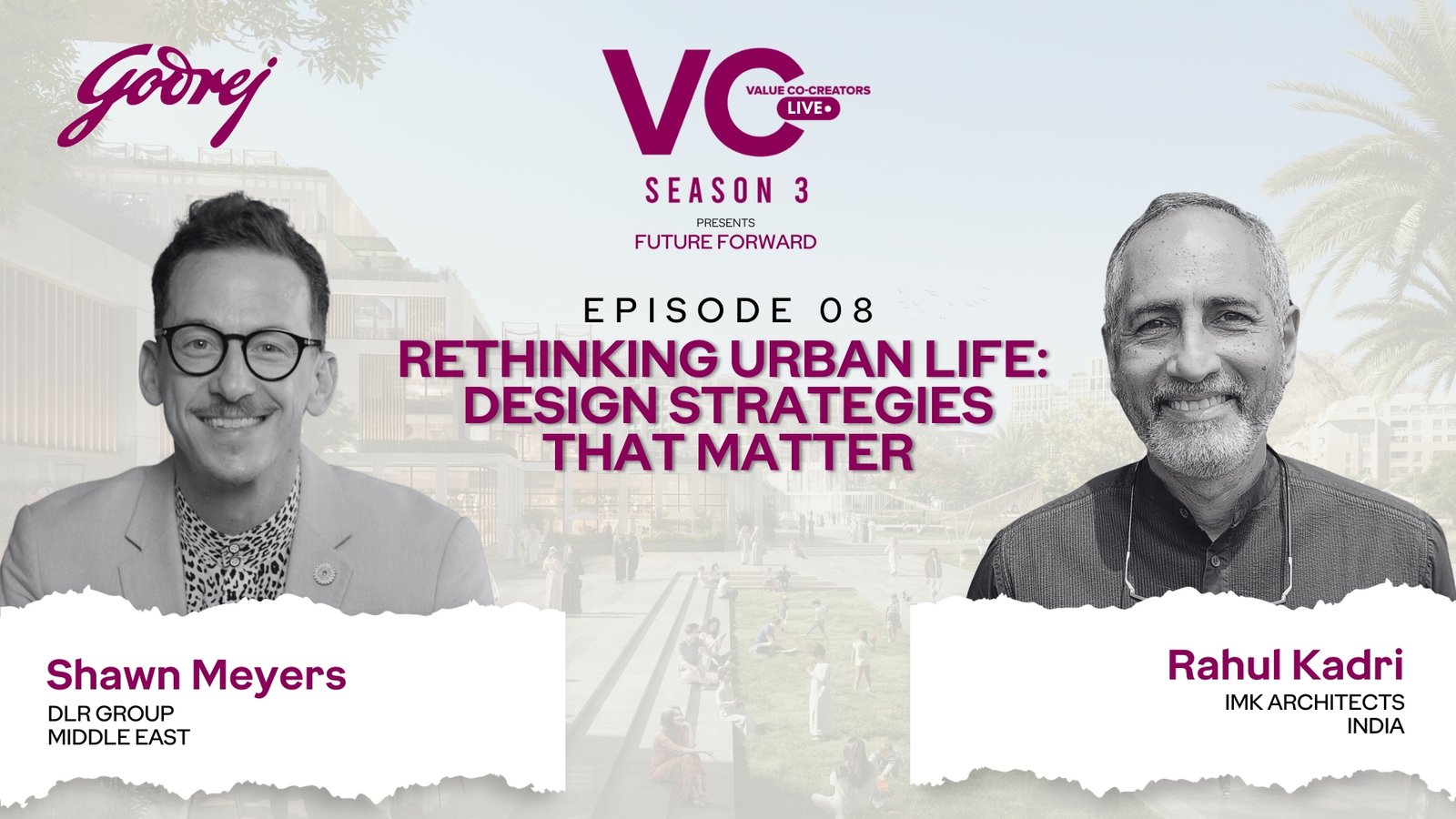
Episode 08
Shawn Meyers and Rahul Kadri

Episode 07
Lukas Kronawitter and Qutub Mandviwala
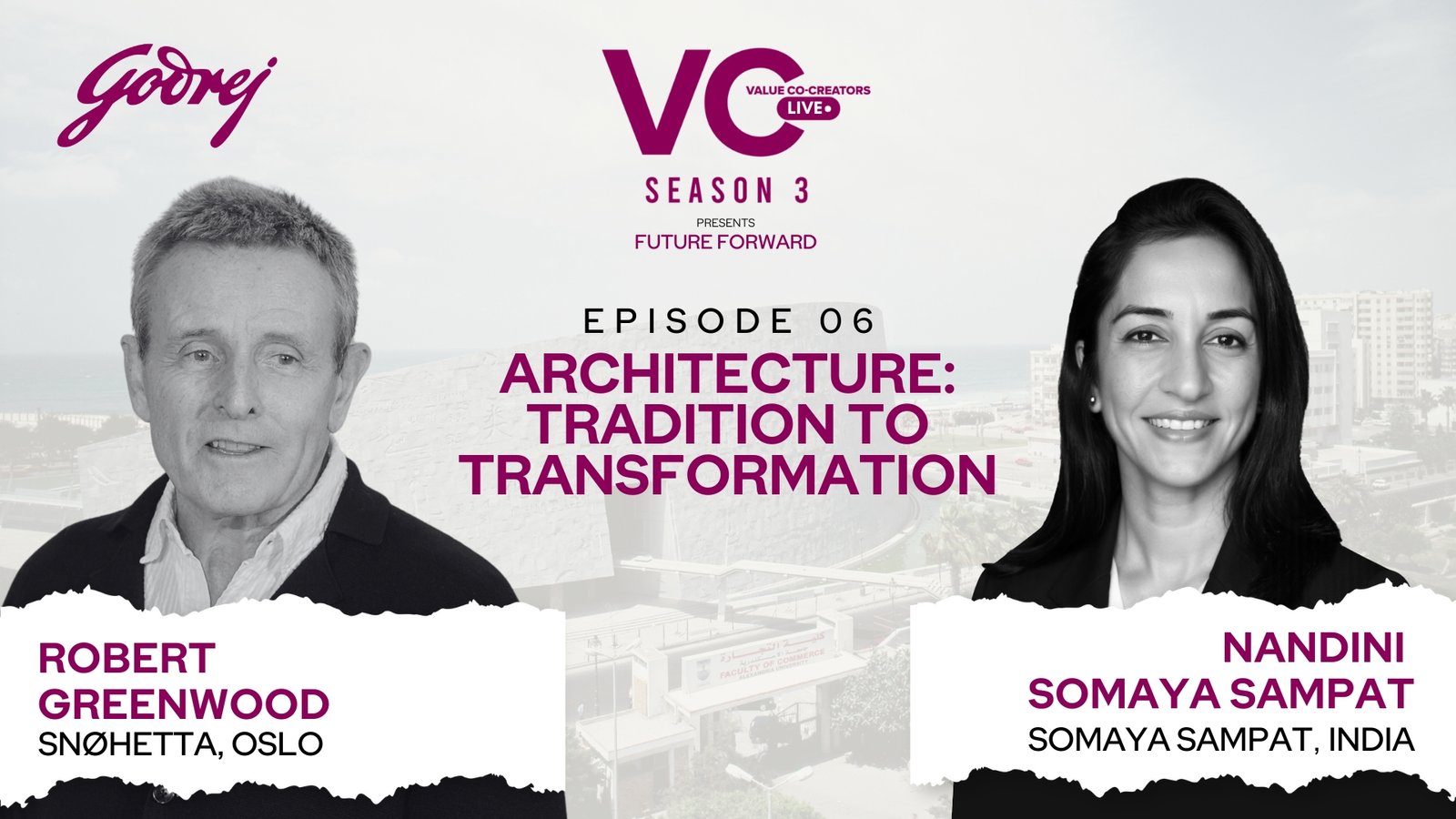
Episode 06
Robert Greenwood and Nandini Somaya Sampat
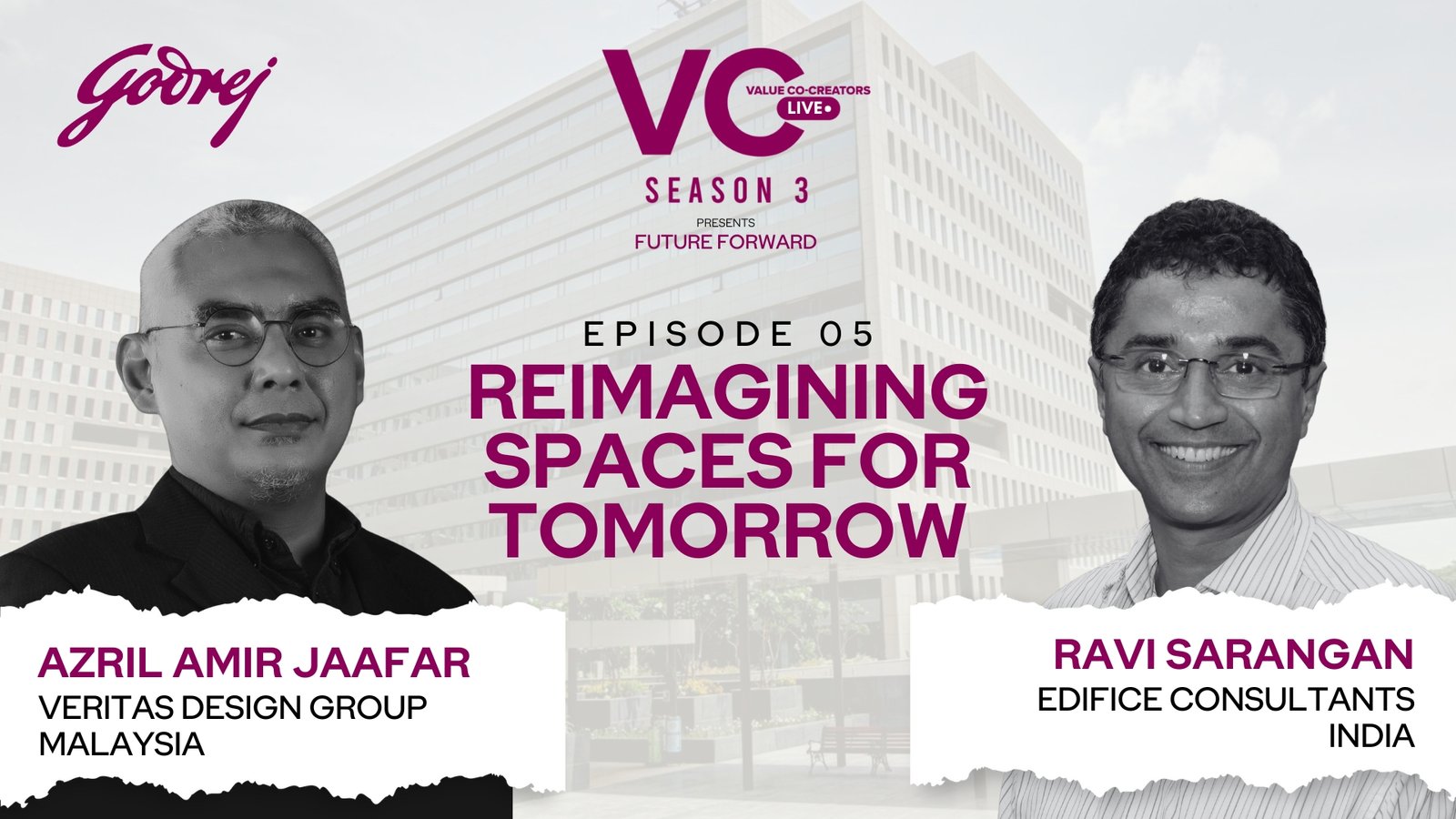
Episode 05
Azril Amir Jaafar and Ravi Sarangan
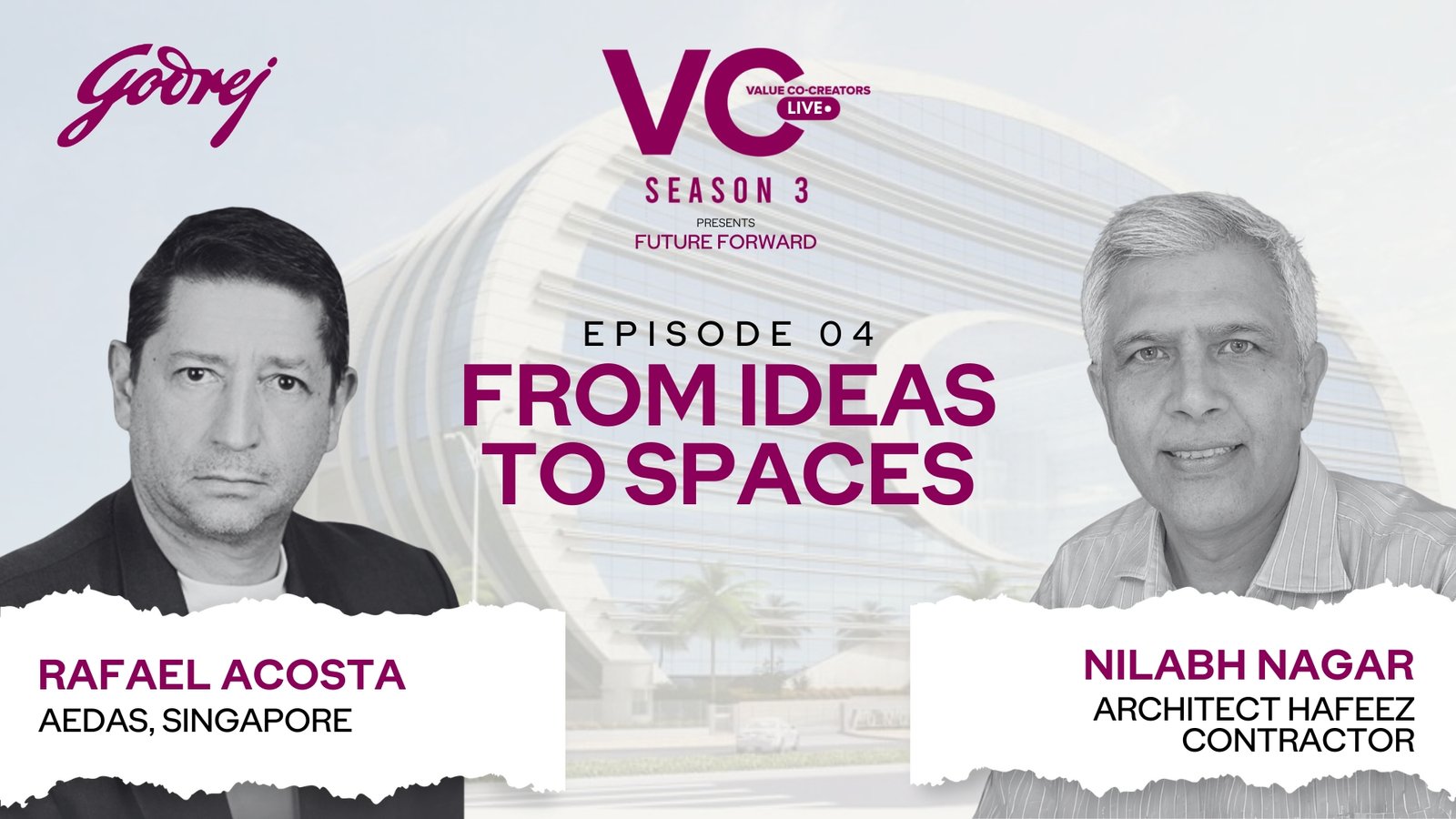
Episode 04
Rafael Acosta and Nilabh Nagar
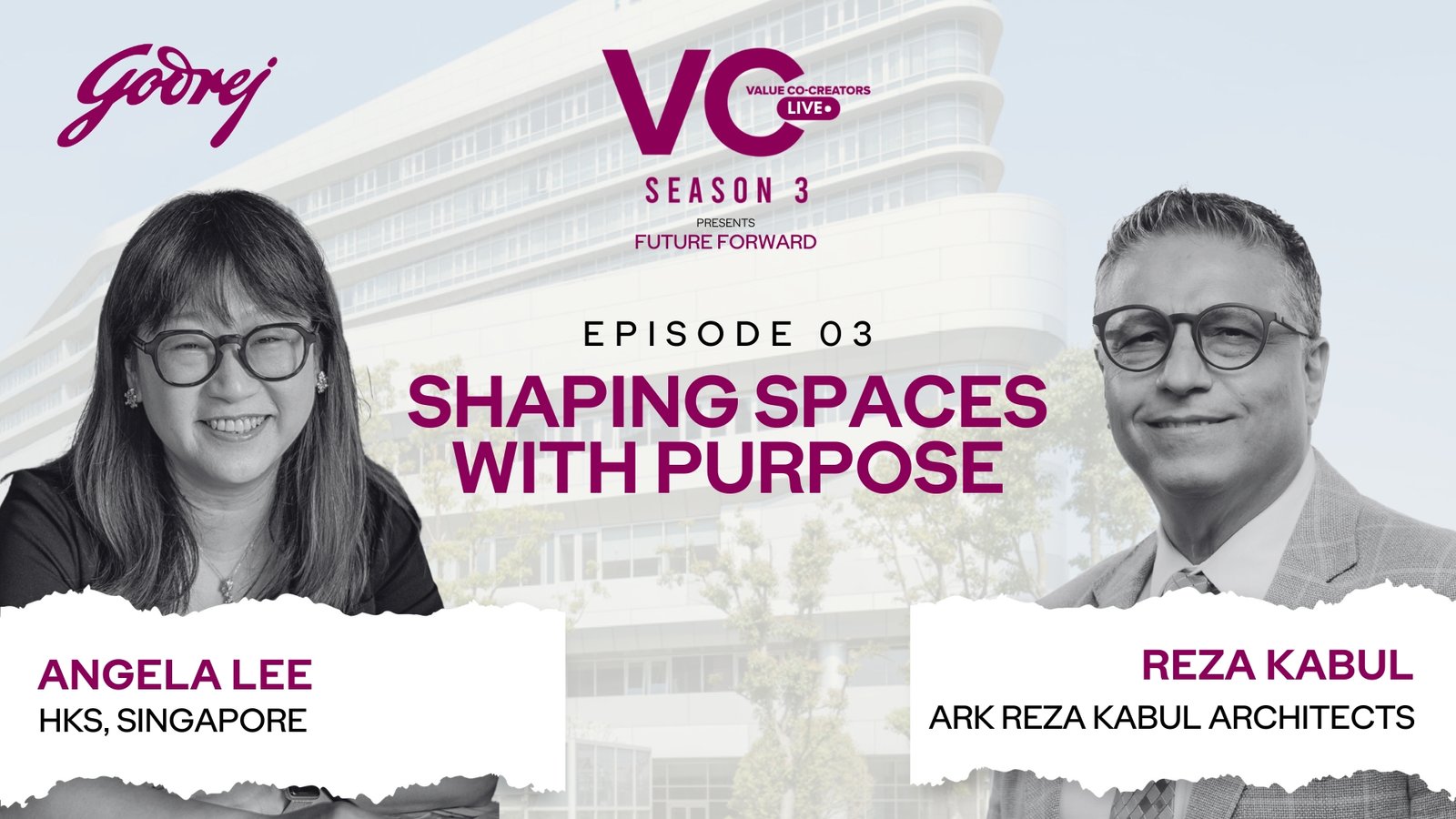
Episode 3
Angela Lee and Reza Kabul
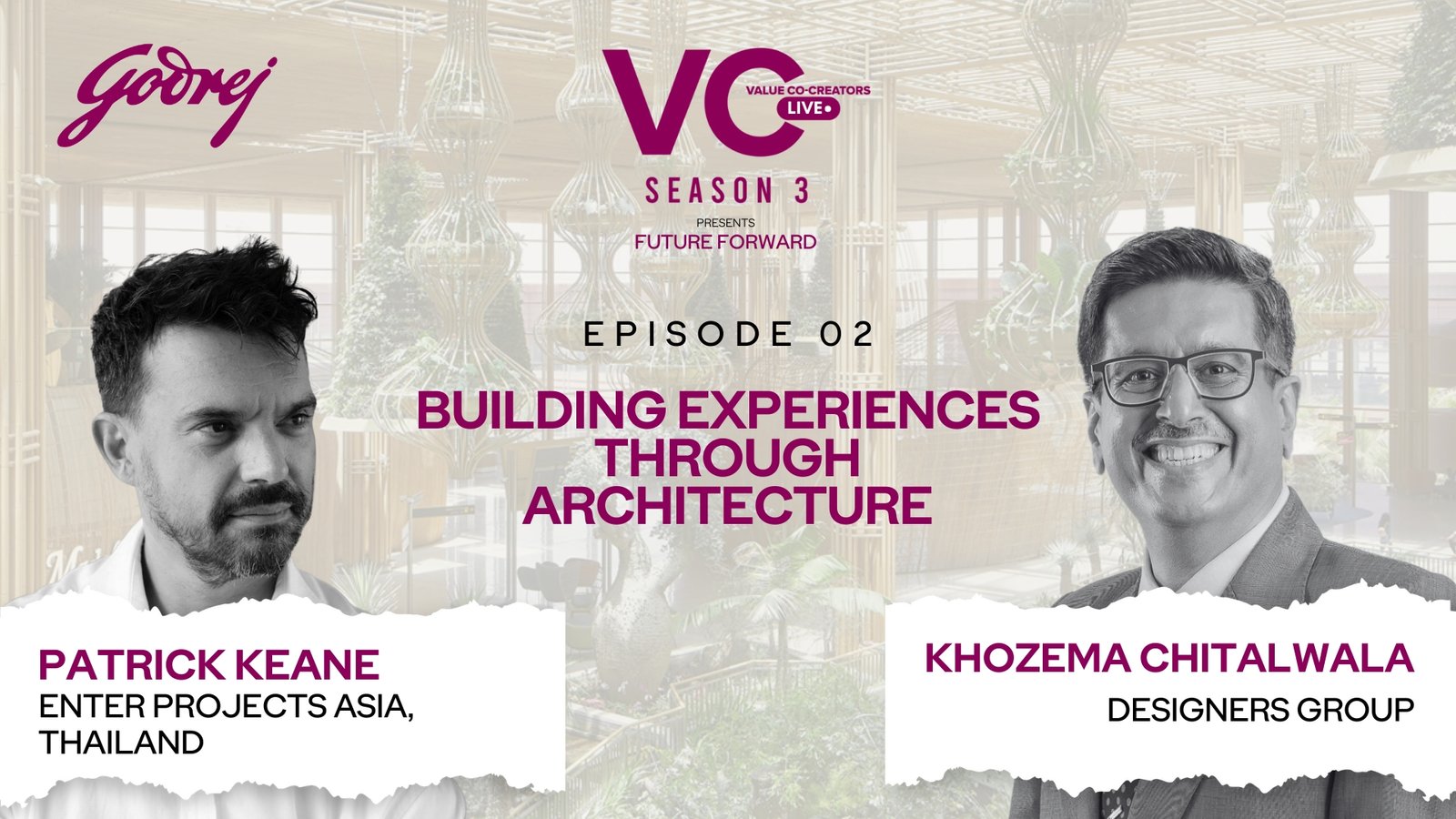
Episode 2
Patrick Keane and Khozema Chitalwala
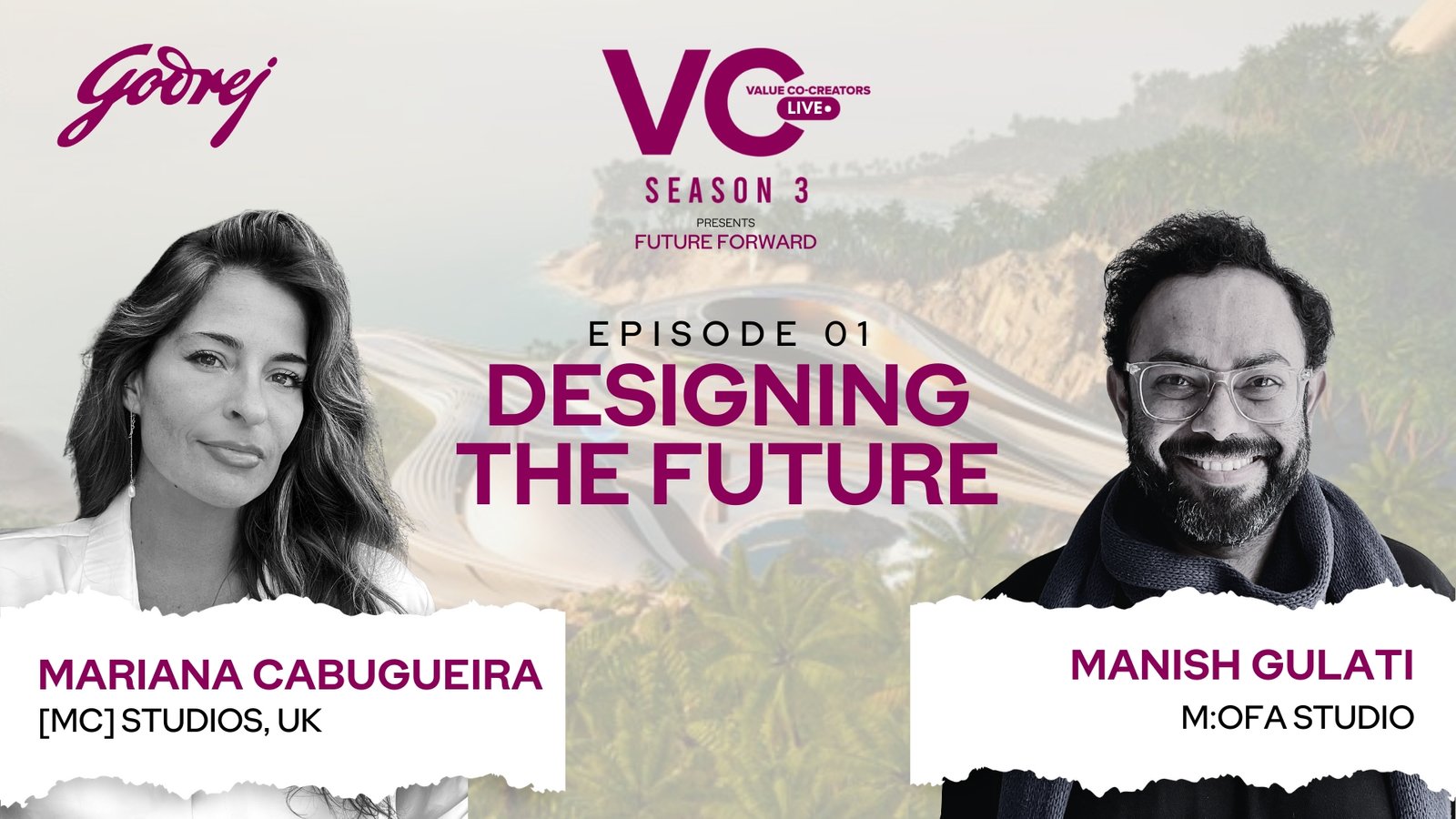
Episode 01
Mariana Cabugueira and Manish Gulati
Be a Part of Our Next Webinar
Join the conversation – hear expert insights & get your questions answered live!
A Legacy of Innovation | Powered by Godrej
VC Live is a thought-leadership webinar series by Godrej that brings together global visionaries to explore the future of architecture and design.
For over 125 years, Godrej has been a trusted name in shaping India’s design, innovation, and lifestyle standards. Through Godrej Locks and Architectural Solutions, the brand has become synonymous with safety, craftsmanship, and forward-thinking design solutions. From iconic locking mechanisms to cutting-edge architectural hardware, Godrej continues to inspire the built environment of tomorrow. With a deep commitment to excellence and a passion for supporting India’s design ecosystem, Godrej champions initiatives like VC Live to foster dialogue, innovation, and community among architects and designers across the nation.
3
30+
40+
Webinar Q&A
Find answers to the most popular questions asked during our webinar episodes.
How can cities ensure that their infrastructure development addresses the needs of both current and future populations?
By planning the future anticipated infrastructure using the projection number of population and statistics. In many Indonesia case it deosn’t work well because he infrastructure wasn’t planned according to th eprojection but rather based on the targeted KPI by the government.
- Anonymous
- May 22, 2025
- Season 3, Episode 9
How the ownership rights to use the pedestrain corridors is given for privte uses?
The pedestrian corridors are public infrastructure provided by city government and it’s NOT supposed to be used ONLY by private. The private sector can use it as part of the public amenities.
- Jit Kumar Gupta
- May 22, 2025
- Season 3, Episode 9
What policies can governments adopt to encourage sustainable urban growth while avoiding the pitfalls of unchecked development?
It’s a very tricky questions. The responds are vary according to the maturity of the infrastructure and cultural livability to take on he government policies.
- Anonymous
- May 22, 2025
- Season 3, Episode 9
How do you envision the future of smart cities, and what are the first steps in creating one in emerging economies?
It’s a very tricky questions. The responds are vary according to the maturity of the infrastructure and cultural livability to take on he government policies.
- Ahsan Kazi
- May 22, 2025
- Season 3, Episode 9
What lessons can be drawn from Indonesia's approach to sustainable urban development for other countries in the Global South?
The very lesson is the provision of the agreed platform and similar understanding from all the multistakeholders.
- Anonymous
- May 22, 2025
- Season 3, Episode 9
Who makes investment in creating these corridors and how the cost is recovered?
The funding is definitely from the City Government and as part of the basic infrastructure it doesn’t necessarily directly to be recovered. It’s the government mandatory services.
- Jit Kumar Gupta
- May 22, 2025
- Season 3, Episode 9
What are some common urban planning challenges faced by both India and Indonesia, and how can they learn from each other?
The similar biggest challenges are big number of population and unequally distributed infrastructure. We should learn about the management and planning in relation on those issues.
- Anonymous
- May 22, 2025
- Season 3, Episode 9
How do you think developing countries can effectively adapt to rapid urbanization while preserving their cultural heritage?
By working on sequential order of community level while having an organized structured government agency.
- Anonymous
- May 22, 2025
- Season 3, Episode 9
What role do you think community engagement plays in creating successful urban development projects?
Community engagement plays a very crucial role since it become the baseline for the constructive process of urban development.
- Samira Andrew
- May 22, 2025
- Season 3, Episode 9
Considering the volume of people using the links, it is better to have a mechanical system linking the different nodes?
It might be correct depends to different contexts.
- Jit Kumar Gupta
- May 22, 2025
- Season 3, Episode 9
How can urban design foster a sense of community and inclusivity in rapidly growing cities?
Urban design as a conduit and providing activity space can accommodate communities’ activity and improve the social cohesion within people.
- Anonymous
- May 22, 2025
- Season 3, Episode 9
Size of city remains anti-thesis to walkability?
At certain size it should be able to be partially divided yet still within integrated ecosystem
- Jit Kumar Gupta
- May 22, 2025
- Season 3, Episode 9
Cities remains complex and transport doe not merely dictate urban quality?
Very true, again it implied differently in different context.
- Jit Kumar Gupta
- May 22, 2025
- Season 3, Episode 9
How can we design urban public spaces using more sustainable materials while ensuring that these spaces remain accessible, inclusive, and resilient to overuse or informal occupation by the public?
As sustainable materials usually have to be supported or sponsored by particular (private) entity, it can start with (private) commercial space that can be funded by the business it self and then spread to the more public spaces that done by the city goveernment.
- Anonymous
- May 22, 2025
- Season 3, Episode 9
Problem with planners is that we are planning for vehicles and not for people.Moment we change our priority of mobility cities planning would go revolution?
It’s a very tricky questions. The responds are vary according to the maturity of the infrastructure and cultural livability to take on he government policies.
- Anonymous
- May 22, 2025
- Season 3, Episode 9
In the age of rapid technological advancement, what should be the considerations of road and public infrastructure so, when the redevelopment happens, it can save money, save time and become hassle free for citizens?
The main considerations should be the easiness of maintaining (free cost maintenance if possible) and the familiarity of the uses by communities.
- Harshal Kandoi
- May 22, 2025
- Season 3, Episode 9
TOD is based on mixed landuse concept mainly driven by the mobility- integrating different modes of the travel?
Agree, the integration of different modes should become a nexus point of movement as well.
- Anonymous
- May 22, 2025
- Season 3, Episode 9
Creating ownership for the city remains critical by involving communities?
Agree
- Jit Kumar Gupta
- May 22, 2025
- Season 3, Episode 9
A main problem in Asian cities, is extreme congestion. People living in a square km of land. Any design intervention can be made to resolve it.
It should be planning intervention at policy level first, then the mixed-programs design at the smaller level.
- Sujeen Raja
- May 22, 2025
- Season 3, Episode 9
What kind of incentives or understandings could be possibly thought of rather than what already exists, i.e., making use of outdated policies, for an Urban Transformation project?
The incentives at the very least should be within 2 layrs : economic/financing layer and social/community layers.
- Anonymous
- May 22, 2025
- Season 3, Episode 9
Also, do you have any say on urban design works v/s the conservation works?
Conservation and heritage emphasis should fostering to richness of urban development and at the same time improving social life with the baseline on enhancement of economic viability.
- Jit Kumar Gupta
- May 22, 2025
- Season 3, Episode 9
Can you please recommend us some interesting books or research papers to read on Urban Design?
Some that mght be relevant are “The 15-Minutes City” (Carlos Moreno), “Soft City: Building Density on Everyday Life: (David Sim), “Urbanisms of the Global South: Theorizing from Contemporary Jakarta”(Abidin Kusno)
- Mihad .
- May 22, 2025
- Season 3, Episode 9
